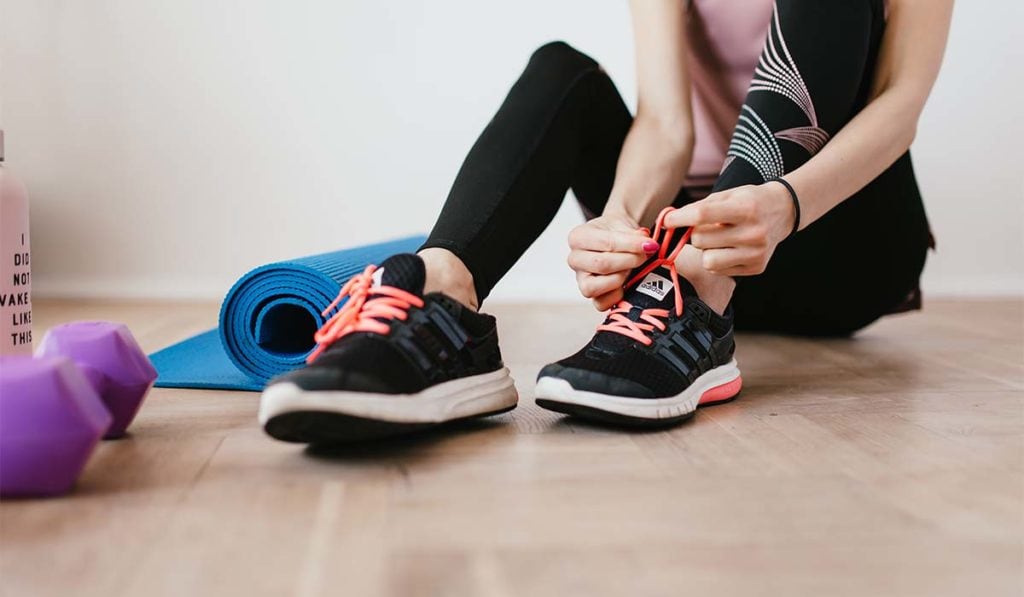
5 Ways to Overcome a Workout Plateau
Do you feel like you’re stuck in a rut and you can’t make any progress with your cycling or running workouts? Don’t worry; this happens to all of us at some point in our fitness journey. As aggravating as it is, it’s a part of the process. In this article, we’ll look at how you can break through a workout plateau to continue making progress toward your fitness goals.
What is a workout plateau?

A workout plateau occurs when your body adjusts to the demands of your workouts, and you start feeling bored, unmotivated, or unchallenged.
Some common signs that you’ve hit a fitness plateau include:1
- You stop getting stronger.
- You stop losing weight.
- You’re bored and often want to skip your workouts.
- You have nagging injuries that won’t go away.
- You feel like you’re always working out but don’t see results.
Why am I plateauing in my workouts?

One of the most common reasons people plateau in their workouts is that they continue doing the same thing repeatedly without changing their workout routine.
When you first start running or cycling, you’ll likely notice plenty of positive changes in your body and how you feel. However, as you get stronger, it’s normal for your workouts to feel easier. If you continue doing the same without modifying the pace, intensity, or type of physical activity, you’ll eventually plateau and stop progressing toward your goals.
It’s easy to get comfortable with a particular exercise routine, but you must switch things up to keep your body from adapting too quickly. By changing your training style or increasing the intensity of your workouts, you can effectively avoid or overcome a plateau.2
Another common reason many people plateau in their workouts is because they’re overtraining and not getting proper rest and recovery. Some signs you might be overtraining include:
- Fatigue
- Lack of energy
- Insomnia
- Muscle or joint pain
- Increased sickness
How long does a fitness plateau last?

The duration of a workout plateau will vary depending on the person. Sometimes, it can last a few weeks or months, which can be very discouraging. To get through a fitness plateau quicker, you may want to enlist the help of a personal trainer or a nutritional coach. They can help you identify areas where you can change and improve your habits for better results.
How to overcome a workout plateau
If you are frustrated with a lack of progress, there are several things you can do to push through a plateau and get out of that rut.
1. Change up your routine.

One of the most effective ways to overcome a workout plateau is to make small changes to your fitness routine. Even if you continue doing the same sport or training activity, adjusting your routine will encourage your body to keep getting stronger.
For example, you might:
- Try HIIT cycling instead of your typical long-distance rides.
- Increase the number of reps of a specific exercise.
- Gradually increase the duration of your runs.
- Try Fartlek training on your next run.
- Swap out your weights for heavier ones.
2. Track your fitness.

You won’t know whether you’re hitting a plateau or breaking through one unless you track your fitness. Since several factors influence your fitness goals, it’s best to track your progress in several ways.
For instance, you could:
- Take progress photos.
- Keep track of your runs or cycling workouts in a fitness journal.
- Record your stats with a fitness tracker.
Tracking your fitness in multiple ways requires more time and effort, but it can help you see progress even when you feel like you’re not making any. For example, if your goal is to lose weight, the scale might not budge for a few weeks, but you may see differences in your progress photos, which can be very motivating and encouraging.
3. Prioritize your nutrition.

Maintaining a nutrition plan that provides your body with enough protein, carbohydrates, healthy fats, and micronutrients will help you build muscle, enhance endurance, and recover well. A healthy diet will enhance your fitness routine and maximize your gains.
Similarly, staying hydrated will also improve your physical performance and recovery.3 The easiest way to stay hydrated is to drink enough water daily. According to the Mayo Clinic, that’s about 15.5 cups for men and 11.5 cups for women (or more if you’re very physically active).4
4. Incorporate strength training.

Strength training is a great way to improve your endurance, strength, and muscle mass while also protecting your joints from injury while doing other activities, like cycling or running. Strength training can also increase your metabolic rate, which will help you burn more calories throughout the day.5
Other proven benefits of strength training include:5
- Improved physical performance
- Enhanced movement control
- Improved cognitive abilities
- Better self-esteem
- Prevention or management of type 2 diabetes
- Reduced blood pressure
- Minimizing lower back pain
- Less arthritis and fibromyalgia discomfort
- Reduced mortality rate
5. Don’t forget to rest.

Giving your body time to rest and recover is just as important as your training activities. When you rest, your body replenishes energy stores and rebuilds muscle tissues, which helps you get stronger. Both will improve your physical performance and prevent overtraining and burnout.
So if you’re feeling extra tired, have nagging injuries that won’t go away, or you’ve been training extra hard, don’t be afraid to take a break and rest. You won’t lose all your progress by taking a day or two off.
Key Takeaways:
Having numb feet when running is common among runners. Several straightforward solutions can help you find relief, but if nothing seems to work, it’s probably time to see your doctor and rule out any medical conditions.Sources:
- McCall, P. (2014, August 14). 6 Signs it’s Time to Switch Up Your Workout. Retrieved September 12, 2022, from https://www.acefitness.org/resources/everyone/blog/4984/6-signs-it-s-time-to-switch-up-your-workout/
- Adams, A. & National Academy of Sports Medicine. (n.d.). Muscular Hypertrophy: Back to the Basics. blog.nasm.org. Retrieved September 12, 2022, from https://blog.nasm.org/sports-performance/back-to-the-basics-hypertrophy
- Judge, L. W., Bellar, D. M., Popp, J. K., Craig, B. W., Schoeff, M. A., Hoover, D. L., Fox, B., Kistler, B. M., & Al-Nawaiseh, A. M. (2021, July 10). Hydration to Maximize Performance And Recovery: Knowledge, Attitudes, and Behaviors Among Collegiate Track and Field Throwers. Journal of Human Kinetics, 79(1), 111–122. https://doi.org/10.2478/hukin-2021-0065
- Mayo Clinic. (n.d.). Water: How much should you drink every day? mayoclinic.org. https://www.mayoclinic.org/healthy-lifestyle/nutrition-and-healthy-eating/in-depth/water/art-20044256
- Westcott, W. L. (2012). Resistance Training is Medicine. Current Sports Medicine Reports, 11(4), 209–216. https://doi.org/10.1249/jsr.0b013e31825dabb8








